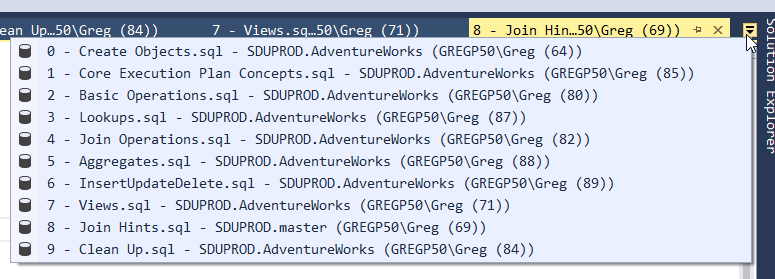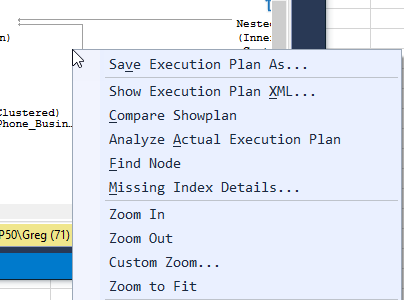Shortcut: Pinned tabs in SQL Server Management Studio
When you get to a large number of query windows or other documents open as tabs in SQL Server Management Studio (SSMS), it can start to be difficult to keep track of them, and to find them when needed.
It’s not too bad when you can immediately find the tab that you want in the drop-down list:

But if you have more tabs than are shown in this drop-down list or if, like me, you often end up with many of them without names (as they are temporary), it can get very hard to find the few that you are mainly referring to.
2019-01-10



